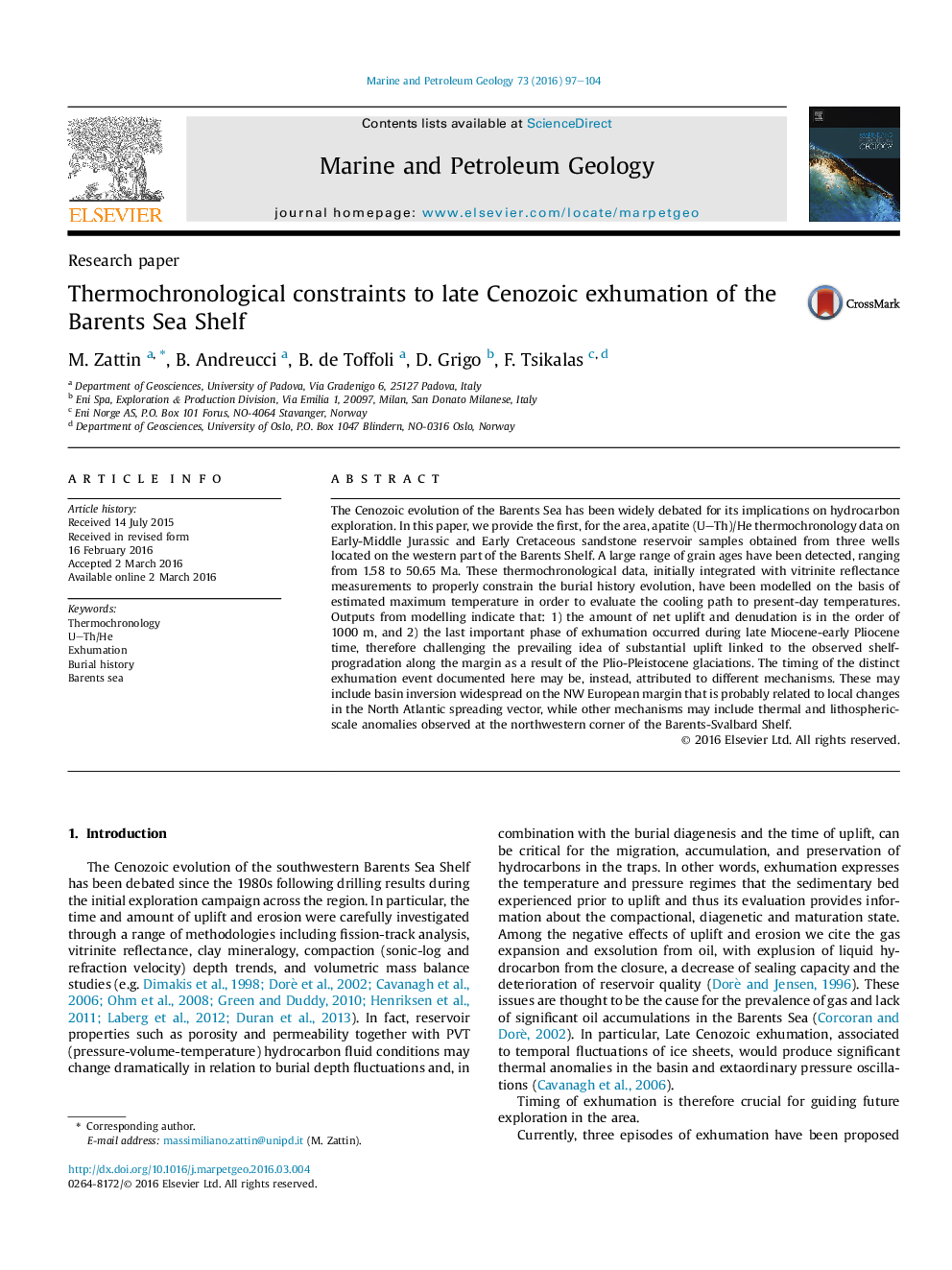| Article ID | Journal | Published Year | Pages | File Type |
|---|---|---|---|---|
| 6434779 | Marine and Petroleum Geology | 2016 | 8 Pages |
â¢Selected cores from Loppa High have been analyzed with U-Th/He dating on apatite.â¢Thermal modelling indicates about 1000 m of denudation.â¢The last exhumation event started not later than the late Miocene-early Pliocene.â¢Exhumation is not related to glacial processes.
The Cenozoic evolution of the Barents Sea has been widely debated for its implications on hydrocarbon exploration. In this paper, we provide the first, for the area, apatite (U-Th)/He thermochronology data on Early-Middle Jurassic and Early Cretaceous sandstone reservoir samples obtained from three wells located on the western part of the Barents Shelf. A large range of grain ages have been detected, ranging from 1.58 to 50.65 Ma. These thermochronological data, initially integrated with vitrinite reflectance measurements to properly constrain the burial history evolution, have been modelled on the basis of estimated maximum temperature in order to evaluate the cooling path to present-day temperatures. Outputs from modelling indicate that: 1) the amount of net uplift and denudation is in the order of 1000Â m, and 2) the last important phase of exhumation occurred during late Miocene-early Pliocene time, therefore challenging the prevailing idea of substantial uplift linked to the observed shelf-progradation along the margin as a result of the Plio-Pleistocene glaciations. The timing of the distinct exhumation event documented here may be, instead, attributed to different mechanisms. These may include basin inversion widespread on the NW European margin that is probably related to local changes in the North Atlantic spreading vector, while other mechanisms may include thermal and lithospheric-scale anomalies observed at the northwestern corner of the Barents-Svalbard Shelf.
